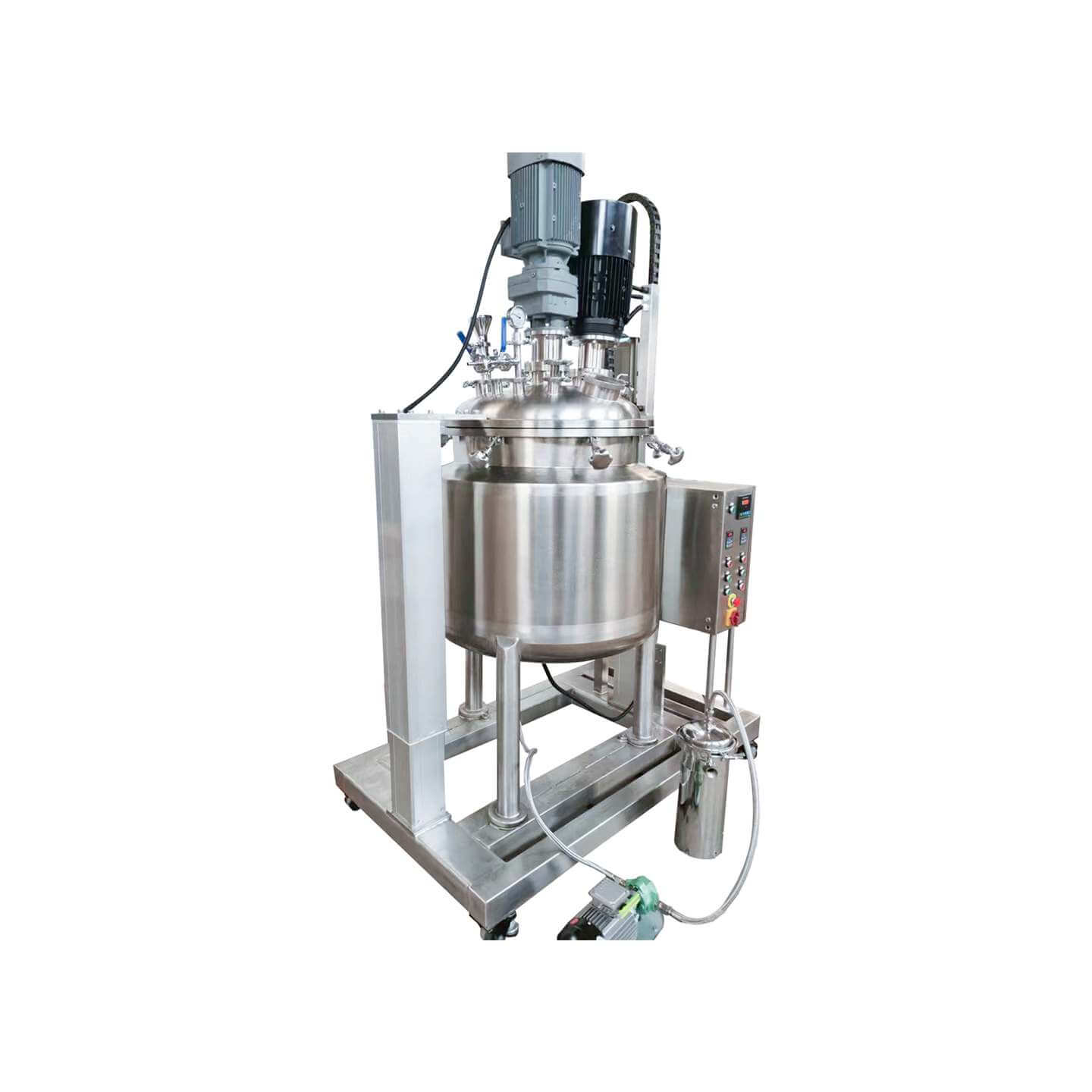

Laboratory Reactor
Laboratory reactor: used in the chemical industry, pesticide, paint, and other fields
Material
glass, stainless steel (316, 304), carbon steel, others
Capacity (L)
10-10000+
Mixing system
anchor, paddle, frame and others
Heating system
electric heating, oil heating and others
The laboratory reactor is small in size, beautiful in appearance, light, and fast in installation. It is composed of a pot body, pot cover, stirrer, jacket, support and transmission device, shaft sealing device, etc. The type of stirring device, rotation speed, sealing structure, heating method, etc. are produced.
Request a quoteA laboratory reactor is a better high temperature and high pressure chemical reaction device. Generally used for mixing, homogenizing, dispersing, dissolving, emulsifying, etc. in the laboratory. It has been widely used in the pharmaceutical and cosmetics industries to produce cheese, lotions, emulsions, oils, etc. The stirring of the laboratory reactor is mainly to homogenize the materials, fully mix the reactants, enhance the heat exchange effect, and add auxiliary devices to achieve certain effects on the reactants and products. Mixing refers to the type of mixing in the transfer system and the laboratory reactor. These are technical issues in the design of the laboratory reactor. As long as requirements are raised during the design process, manufacturers will generally make targeted suggestions or select relevant standards, design, and manufacturing.

In addition to the process requirements, the structural design and operation of the laboratory reactor meet certain conditions, and the automatic control system of the laboratory reactor also has certain technologies, including temperature control, mixing control, feeding and discharging control, metering, etc. All laboratory reactor controls can be semi-automatic and fully automatic, and of course, corresponding electronic control software and hardware, mechanical valves, pipe fittings, etc. can also be used.
Various chemical changes in the chemical process are based on the premise of fully mixing the reactants. The reason why the application range of the stirring equipment is so wide is that the operating conditions of the stirring equipment (such as concentration, temperature, residence time, etc.) have a wide range of control. For heating, Cooling, liquid extraction, gas absorption, and other physical change processes, some effects can only be achieved by stirring operations. Can adapt to diversified production.
Balancing laboratory reactor temperatures
At first, in order to control the reaction speed of the laboratory reactor, when the equipment was running, people often acted too hastily to turn the machine to the correct position. In fact, this approach often backfires. In this state, the equipment is easy to reverse, and the thermocouple will cause the stirring tank to deform. Furthermore, in addition to deformation, this led to rapid temperature rises in laboratory reactors and destroyed mechanical properties.
In order to balance the temperature of the laboratory reactor, it is also necessary to handle the material within a reasonable range. Therefore, the more material that is processed, the higher the temperature of the laboratory reactor. This is to remind the equipment operator that due to too much material, the laboratory reactor did not reach the ideal temperature within the specified time, but this is normal.
In addition, the cooling temperature of the laboratory reactor should be gradually adjusted and circulated. Once the temperature of the laboratory reactor rises to the rated temperature, it will have an impact on the material reaction. In this case, the cooling effect of the cooling system is very important, but attention should be paid to the gradual circulation to avoid excessive temperature differences.
This laboratory reactor can not only ensure stable production, improve product quality, increase income, and reduce physical labor, but also eliminate environmental pollution. If the laboratory reactor uses heat energy rationally, selects good process operating conditions, strengthens insulation measures, improves heat transfer efficiency, reduces heat loss to a minimum, and makes full use of waste heat or heat generated after reaction. Therefore, the application of heat pipe technology will be the future development trend of laboratory reactors.




